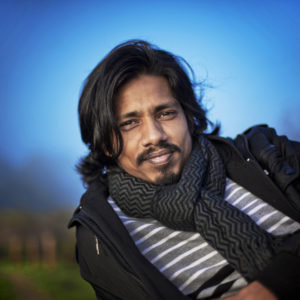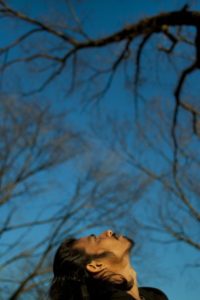Leave Me Alone by Khaled Hasan
PhotoBook Collection info here
Product code: 9786098032039
Author: Khaled Hasan
ISBN: 9786098032039
Cover: paperback
Pages: 168 stron
Publisher: Šviesos raštas
Language: English

From my childhood, I like photographs. But in my society it had more difficult to do it properly. So during post graduation in Accounting, I started my visual techniques as a Photographer in 2001. In 2006, I joined Pathshala (South Asian Institute of Photography) and some changes are happened in my life. I complete some workshop in Chobimela IV (2006). I am very inspired by my teachers Shahidul Alam, Abir Abdullah, Morten Krogvold, Reza Deghati. They teach me punctuality, energy and how to honor my photographic subjects. In 2009, I completed Photojournalism from Pathshala (South Asian Institute of Photography). I am worked as a freelancer in some Daily Newspaper in Bangladesh and Majorityworld (International Photo Agency). I have been awarded as a 2008 All Roads Photography Program of National Geographic Society for my Documentary Project. In 2009, I received Alexia Foundation Student Award (Award of Excellence). I have some group Exhibition in Bangladesh, in 2009 Chobimela V (International Photography Festival), in 2009 Photojournalism Competition on Human Rights in Montreal, Canada and 2008 National Geographic Headquarters in USA. Always I want to show a documentation of human with my photographs and tell a story with them as a messenger of the community. My philosophy is that it is essential for the photographer to create communication and trust with his subjects. Photography has the visual power to educate by allowing us to enter the lives and experiences of others. Through photography, I hope to help the society to empathize with hidden social, political and environmentally suffered people. It is important to realize that no documentation will ever be finished. This work informs my identity that has started from one point but has no ending.


PhotoBook Collection info here
Product code: 9786098032039
Author: Khaled Hasan
ISBN: 9786098032039
Cover: paperback
Pages: 168 stron
Publisher: Šviesos raštas
Language: English

Photographer Khaled Hasan’s compelling series of black and white photographs documents and emphasizes the paradox in the dramatic struggle for survival of the eroded Piyain River and a poor stone-crushing community in northern Bangladesh. Khaled Hasan challenges us with this incredible set of well-composed images, he holds up a mirror. Instead of passing judgement he wants us to reflect on and question our own environmental behavior. Khaled Hasan’s photos have all the elements of a good photo. They have beautiful composition and contrast, but above all content and meaning. Now and then he adapts his style to grab our attention, but in a subsequent photo he immediately returns to the content. The bed of a river in the northeast of Bangladesh is completely removed by an impoverished community; ancient black rocks, rubbed smooth by the water. The photos show the people slogging, sweating, fighting to survive. Less than ten years ago you would have said, ‘Oh, those poor people’, but times have changed. The polar ice caps are melting and greenhouse gases are destroying our ozone layer. In 2009, anyone looking at these photos feels sympathy for the river, for Mother Earth. Stripped bare, the Piyain River lies meekly by. Defenseless and scarred for life. What must once have been a pretty riverbed, full of big round rocks, lined with trees and bushes, has now become a wasteland. The channel that leads the water to the sea has disappeared. At the first monsoon rains the water will run in all directions, as if Bangladesh has been hit by another flood. What will the water soon carry along with it? And where do all those crushed rocks go? Who uses them and what for? What at first appears to be a far-off problem comes so horribly close by. Why does Khaled Hasan see a problem to which we are blind? The way in which the world functions is unjust; there is structurally unfair opposition. The world spends 50 billion a year on development aid, but spends 1,000 billion a year on arms and easily 7 trillion dollar was spent to control the financial crisis. If things were distributed fairly, this community in Bangladesh would have a normal life. And they would not be forced to plunder the Piyain River day in and day out. Perhaps we don’t need these rocks to live a good life. In the meantime, Mother Earth is turning her back on us and we are unwilling to look at the consequences of our behavior. We don’t want to recognize that we are unnecessarily allowing a community in northern Bangladesh to live in poverty and we don’t want to recognize that our behavior is destroying the Earth. We should be thankful that Khaled Hasan did want to look. With his photography he confronts us with ourselves. His photo of the large rock, irrevocably smashed to pieces with a sledge hammer, describes in great detail our own tragedy. Geert van Kesteren – Jerusalem
Category Arts & Photography Books
Size: Standard Portrait, 8×10 in, 20×25 cm
Pages: 44 Pages
Publish Date: Dec 22, 2009
Softcover : Flexible, high-gloss laminated cover